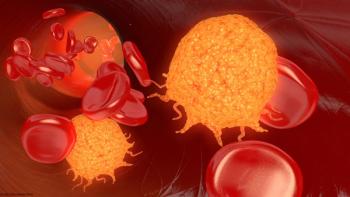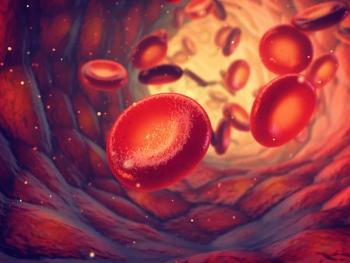
Expert Highlights Risk Factors for Disease Progression in Polycythemia Vera
Data from the REVEAL study affirm elevated white blood cell counts and higher variant allele frequency as risk factors for progression in polycythemia vera.
In a conversation with CancerNetwork® at the
In addition to prior thromboembolic events, Grunwald, chief of the Leukemia Division and director of the Transplantation and Cellular Therapy Program at Atrium Health’s Levine Cancer Institute, explained that factors such as elevated white blood cell counts and higher variant allele frequency may affect a patient’s likelihood of developing myelofibrosis or acute myeloid leukemia (AML). He also highlighted ongoing research focusing on a small subset of patients enrolled on the REVEAL study in which investigators are evaluating molecular factors that may predict disease transformation in those with PV.2
Transcript:
Having a history of thrombosis is not only a risk factor for future thrombosis, but also a risk factor for disease progression to myelofibrosis and AML. That lends some insight into the biology of the disease and perhaps, in the future, to introducing disease-modifying agents earlier in a patient’s course. If a patient has a history of thrombosis, and we discovered that a certain type of therapy might be able to help that at-risk population have a lower chance of transforming, it stands to reason that more of these patients should be treated with that therapy, whatever that therapy is. That basic understanding is helpful.
Then, some of the other risk factors that we identified had been suggested in previous work, like the elevated white blood cell count and the higher variant allele frequency. It’s almost intuitive to me that the duration of time from diagnosis to starting on the study—the amount of time with the disease—would be a risk factor given that it takes time to progress.
We did present here, at this meeting, a molecular analysis in a small subset of patients who [had] transformed vs non-transformed [disease].2 We’re trying to identify whether there are molecular features that can prognosticate for transformation. We have that in myelofibrosis; we know that there are certain high-risk mutations, but it’s not really known in PV. We’re now looking at a larger cohort of patients on the REVEAL study, some of whom transformed and some of whom did not transform, and seeing whether in these larger groups of patients we can identify molecular differences.
References
- Grunwald M, Zwicker J, Gerds A, et al. A real-world evaluation of risk factors for disease progression in patients with polycythemia vera (PV) enrolled in REVEAL. Presented at the 2024 European Hematology Association (EHA) Congress; June 13-16, 2024; Madrid, Spain. Abstract P1047.
- Crowgey E, Timmers C, Xue Z, et al. Analysis of molecular mechanisms and predictive biomarkers of disease transformation in polycythemia vera. Presented at the 2024 European Hematology Association (EHA) Congress; June 13-16, 2024; Madrid, Spain. Abstract S217.
Newsletter
Stay up to date on recent advances in the multidisciplinary approach to cancer.

















































































